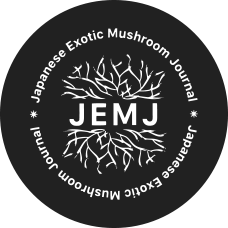Login or Subscribe
You must be logged in to access this content
Subscribe for free access to Japanese Exotic Mushroom Journal and gain insider knowledge on effective cultivation methods for Japanese mushroom species. Elevate your skills with expert tips and innovative technologies to master the art of growing Japanese exotic mushrooms.
◆ Discover exclusive Japanese mushroom cultivation techniques
◆ Learn innovative methods to enhance mushroom quality and yield
◆ Tap into Japan's rich heritage for unique growing insights
◆ Discover exclusive Japanese mushroom cultivation techniques
◆ Learn innovative methods to enhance mushroom quality and yield
◆ Tap into Japan's rich heritage for unique growing insights
Subscribe Now for Free Login
Cooking with Kinoko
Shimeji rare exotic mushroom cooking
Our spring issue of 2023 marks an interesting edition of this series: for the first time I am approaching an exotic mushroom variety rarely grown abroad, shimeji, also called bunashimeji or beech mushrooms in English. Compared to shiitake, or oyster and king oyster mushrooms, shimeji are rarely found in the growing portfolios of Western mushroom cultivators. Like enoki, this variety was adapted quite early to bottle cultivation and the cultivated form bears almost no resemblance to wild specimens. Shimeji have a good shelf life, better than king oyster and shiitake, and comparable to enoki and Agaricus varieties. Shimeji can also be frozen (as noted in the profile of Misuzu Life), and, while not traditionally dried, the processing techniques of MushWell (highlighted in the 2nd issue of 2022) have been used to provide a dried, eat-as-is, mushroom flake from shimeji.Shimeji have a very good texture, similar to king oyster mushrooms but crunchier, like a cross between the thick stem of boiled cabbage and sausage. They also have a remarkably mild fragrance and a pleasant, faintly nutty flavor. Without packing a strong punch, shimeji are an effective umami booster and add bulk and richness to dishes, especially since they retain their shape and size even better than king oyster or shiitake mushrooms do. Shimeji are an excellent source of several B-vitamins, potassium, plant-based protein, L-orthenine, glutamic acid, and beta-glucans. In Japan, shimeji are commonly used in soups and stews. Another common preparation includes making daikon radish and shimeji pickles. Shimeji are also a mainstay in Japanese Italian-style pasta dishes and pizzas, along with king oyster, maitake, and shiitake. Despite this versatility, some people unfamiliar with their texture may not enjoy it; it certainly took me a year or two to acclimate to it after coming to Japan. While I am a very picky eater when it comes to texture and mouthfeel, this is by no means unusual among Americans.Similar to oyster and king oyster mushrooms, shimeji are a good choice for occasions when a cook wants to use mushrooms but doesn’t want to be cooking mushrooms_emdash_if that use of italics conveys my gist. Shimeji amplify all the other umami flavor already present and give added richness through the glutamic acid they contain, but shimeji don’t, themselves, pop out in a dish’s aroma or taste. Whereas I recommended using oyster and king oyster mushrooms with dishes that have strong fragrances and flavors, dishes with a lot going on, I recommend using shimeji with savory and hearty dishes; a faint difference. Using a few hundred grams of shimeji in a slow-cooker with roast beef, potatoes, onion, carrots and garlic for instance, or with a shrimp alfredo sauce to name another example.For what recipes to use for this series though, I had to recalibrate according to the requisites I designed the Cooking with Kinoko series around; namely dishes easy to make vegetarian or vegan, and with reasonable preparation time. With the image of everyday mushrooms in mind, and simple cooking that scales wells to large portions (for families, friends, or roommates), I eventually coalesced around the two most common things I cook (as a working father) using shimeji: 1) my (very) modified solyanka, based on nothing but vague memories of eating it regularly in the cafeterias at the Fredrich Schiller University in Jena, Germany circa 2012 and a brief consultation with a local Eastern European acquaintance on how to prepare it, and 2) Japanese-style curry, the very interesting Japanese take on curry that emphasizes the sweet and savory elements of curry with less saltiness and less heat, as well as a very thick creamy roux. As shimeji are Japan’s second-most popular mushroom, (and second cheapest, behind only enoki on both counts), I thought it was fitting to showcase a ubiquitous Japanese comfort food along with a personal family favorite from Eastern Europe, (I apologize to all Eastern Europeans whose culture I have appropriated) both very simple to prepare huge volumes of, and both loaded with fresh, but cheap, vegetables. A healthy lifestyle should be comforting and manageable, rather than stressful and complicated. Cheap, filling, easy-to-make, but healthy, meals are the aesthetic I think works best for reaching the largest number of consumers.Lastly, I would like to make a note to all the non-American readers of the journal: I have used metric as the default in all recipes, but my approach is still very American. I use volume because it is far easier and faster to measure while cooking. I hope that even those readers strongly accustomed to extreme precision in their recipes, can forgive this intensely American trait.





 1-2-13 Honmachi, Komoro city, Nagano prefecture, Japan 384-0026
1-2-13 Honmachi, Komoro city, Nagano prefecture, Japan 384-0026